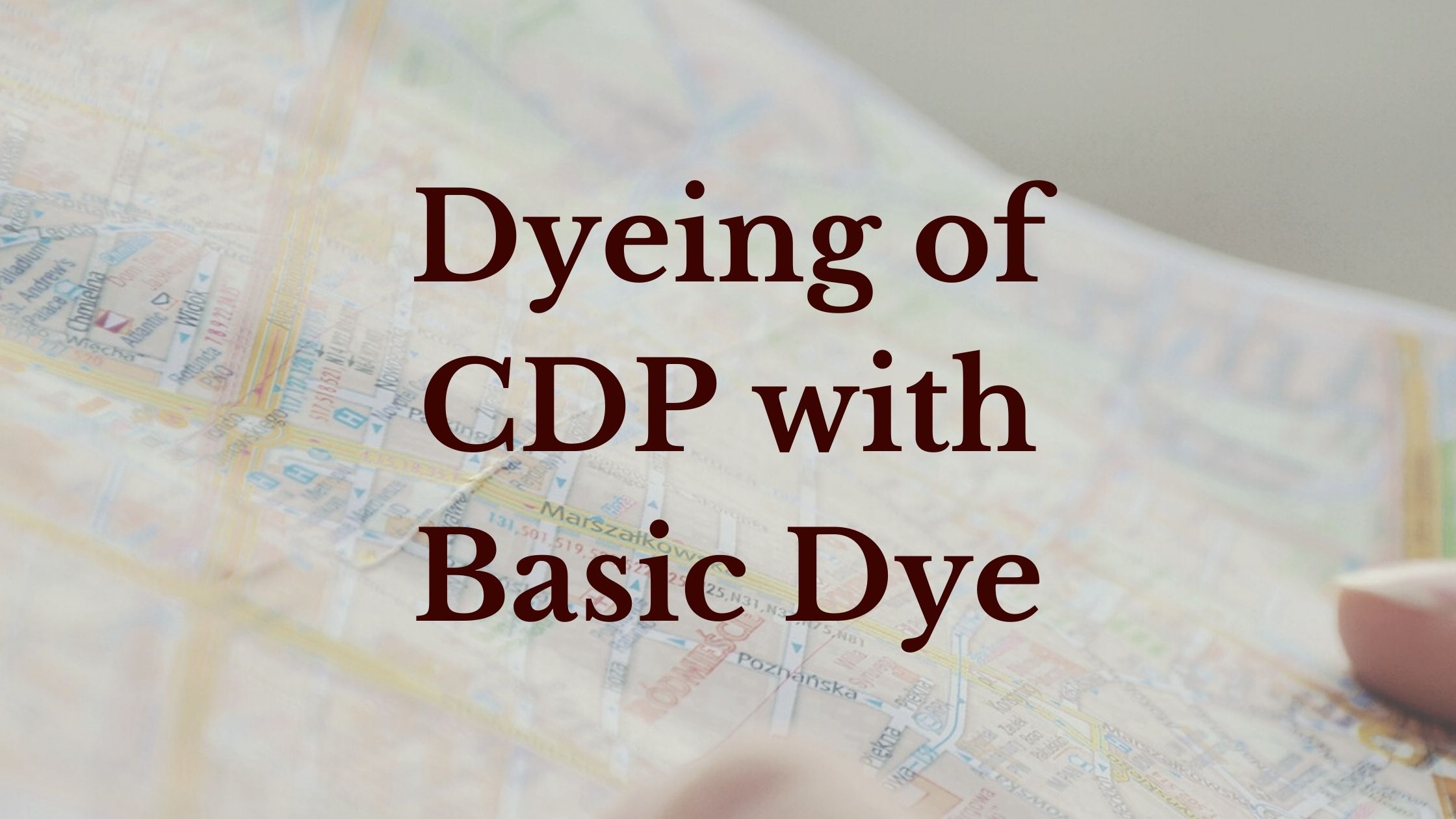Dyeing of CDP with basic dye is a better choice in case of modified polyester. We all know that Disperse dye is used for polyester dyeing. But you will amaze to know that basic dye can also be used for polyester dyeing. But it is used for modified polyester.
If you are on a quest for knowing about modified polyester dyeing, find it right below!
CDP which stands for cationic dyeable polyester, is a form of modified polyester. Regular polyester is modified with anionic groups in the ester interchange stage to produce cationic dyeable polyester.
During polymerization a special change is carried out for manufacturing cationic dye able polyester. They consist of 5 sulphopthalic acid to create anionic sites in the polyester fiber. This characteristics is absent in the regular polyester fiber. As having anionic sites in the structure they can be dyed with cationic dyes like Basic dye.
With basic dye, these cationic dye able polyesters can produce brilliant shades. Basically, Disperse dye is used for polyester dyeing.
Polyester can be dyed in High Temperature, Carrier method and Pad- thermosol method using Disperse dye. Due to having lower building up property and lower molecular size, disperse dye can’t produce brilliant shades on polyesters.
Compared to acrylics, the basic dyes diffuse less rapidly into cationic dye able polyester and the chance of un-levelness is not as high even in the presence of carrier (https://www.textileproperty.com/dye-carriers/). But if carrier is used, it must be removed completely if light fastness is not to be impaired.
Typical Recipe of Dyeing of CDP with Basic Dye
| Chemicals used | Dozing |
| Basic Dye | X% |
| Wetting agent | 0.1 – 0.5 g/L |
| Sequestering agent | 0.5 – 1.0 g/L |
| Levelling agent | 1.0 – 2.0 g/L |
| Acetic acid (80%) | 1.0 – 2.0 g/L |
| Sodium acetate | 0.5 – 1.0 g/L |
| Carrier | 1.0 – 3.0 g/L |
| Temperature | 90 – 100℃ |
| Time | 45 – 90 min |
| pH | 4 – 5 |
| M:L | 1:10 |
Dyeing Procedure
- Set the temperature with substrate at 40 -50 ℃ temperature and add wetting agent, sequestering agent, buffer (acetic acid &u sodium acetate) and salt. Then run the dye bath for 5 – 10 min
- Add (dosing) dye solution and raise the temperature to 80℃ @ 1.0 – 2.0 ℃/min
- Raise the temperature from 80℃ to 95 – 100℃ @ 0.5 – 1.0℃min. In this stage dyeing rate is high – it has a big possibility to produce unlevel dyeing. So, the rate of increasing temperature should be very slow.
- Run the bath for 60 – 90 min at the same temperature
- Lower down the bath temperature to 70 – 80℃ over 15 – 20 min
- Lower down the bath temperature from 70 – 80 ℃ to 40 – 50℃ over 10 – 15 min
- Drop the dye bath and carry on the after-treatment process.
After-treatment
- Rinse twice with warm and cold water
- Treat with:
Detergent – 1.0 – 2.0 g/L
Alkali – 1.0 – 3.0 g/L
Temperature – 50℃
Time – 10 – 15 min
M:L – 1:10 - Rinse again with acetic acid for neutralization
- Rinse again
- Softening ( if needed)
Dyeing Curve

Image Source: Practice of Textile Coloration
Fig: Process curve of dyeing polyester with basic dye
Till now, we have come to know about dyeing of CDP with basic dye. Let’s know more about modified polyester.
Modified Polyester
Regular polyester is formed by the condensation reaction between dibasic acid and dihydric alcohol. Regular polyester is chemically modified with different modifying agents to improve dyeability, differential dyeing, antibacterial properties, reduced flammability, high water absorbency and modified mechanical properties.
Why prepare modified polyester?
- The three major limitations associated with the hydrophobicity of polyester is soiling problem, low moisture regain and static electricity.
- To overcome these problems and improve dye ability, antibacterial properties, mechanical properties, reduced flammability we need to modify polyester.
Modification of Polyester
Modification of regular polyesters can be carried out by following any step mentioned below:
- During polymerization, by introducing a third component in the polymer chain of PET, the chemical composition of the fiber can be altered.
- Certain additives like particulate fillers and pigments of polymers can be added in the melt phase before extrusion.
- During melt spinning modification can be carried out to produce hollow varied fiber or micro-denier fibers.
- Surface modification of regular polyester.
Some modified polyesters
Modification for deep dyeing polyester
- Dye stuff diffuse into the fiber and absorbed by amorphous region during dyeing. In case of synthetic fibers, for this glass transition temperature (Tg) is responsible. It increases with the increase in polymer orientation and crystallinity of fibers.
- Polyester is modified to reduce the Tg to improve the dye mobility. The addition of aliphatic co-monomers with the polyester (replacing terephthaloyl units with an aliphatic di-carboxylic acid such as glutaric or adipic acid) will make the fiber more dye able even at boil without carriers, aromatic units.
- Features for deep dyeing polyester-
- Better dye ability
- Less dyeing time
- Highly hydrophilic
- Soft feel
Carrier free dye able polyester
- This polyester that can be dyed at boil without carriers is similar to that of polyester fibers dyed under HTHP conditions.
- It can be produced in two ways: Physical and chemical modification of fibers are carried out.
- During melt spinning, drawing and heat setting operations are certainly changed to produce this fibers. Air texturing and filament mixing have also be carried out in this purpose. This leads to physical modification of polyester.
- Polyethylene glycol (PEG), adipic acid or azillic acid etc additives can be used to chemically modify the polyester.
Cationic dye able polyester
- Polyester is modified by introducing anionic groups into the ester interchange stage to produce cationic dye able polyester.
- Cationic dyes has good build up property and provide a bright shade and deep colors on this modified polyester.
- Again it improves the wet treatments.
To Wrap Up!
Though Disperse dye is used for polyester dyeing in general, Basic dye can produce a brilliant shade on cationic dye able polyester. Nowadays, this practice of dyeing cationic polyester with basic dye is increasing.
Cationic dye able polyester has excellent resistance on sublimation on wet process. Again exhibits good to excellent wash fastness and overall a good rubbing fastness. Also, this is free from fouling of mixing lycra.
You may also check: Polyester fabric dyeing with high temperature high pressure method

